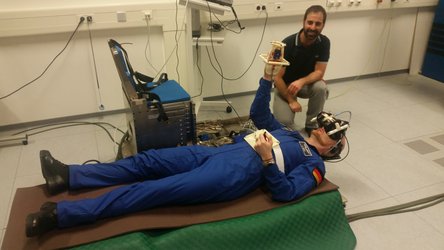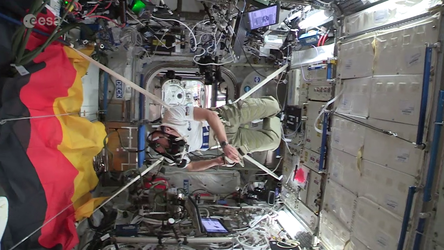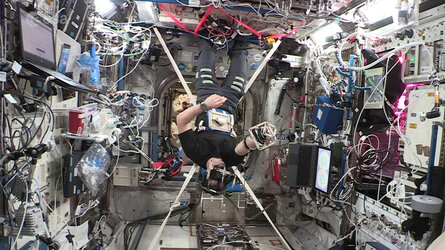

Alexander Gerst during the Grasp Experiment
ESA Astronaut Alexander Gerst in the Columbus Module of the International Space Station, performing the Grasp Experiment. The focus of this experiment is on how a brain combines the perception of its body with visual information to coordinate hand movement. Researchers suspect that, on Earth, the brain uses gravity as a reference. When reaching for an object, the brain will calculate how far your hand is by using visual clues as well as how shoulder muscles counteract the downward force of gravity to keep your arm straight. The sensation of floating for months on end is something our brains never had to deal with until last century and seeing how they adapt offers interesting clues to their workings. The research will help us to identify the workings of the vestibular system that keeps our balance, and how it connects to the other sensory organs. In other words, Grasp is researching the physiology behind eye–hand coordination as well as shedding light on how to treat patients showing a loss of vestibular function on Earth. For astronauts, the research will be useful during spacewalks, where coordination in weightlessness with few visual clues is of utmost importance.
Alexander posted the picture on social media, commenting: "European friendship & cooperation at work: we managed to save the French GRASP experiment by deploying my German flag on the floor of the Columbus module, blocking reflections that disturbed the infrared sensors."
Alexander Gerst is currently on his second mission to the International Space Station for Expeditions 56 and 57. The mission is part of ESA’s vision to use Earth-orbiting spacecraft as a place to live and work for the benefit of European society while using the experience to prepare for future voyages of exploration further into the Solar System.
Connect with Alexander Gerst: http://alexandergerst.esa.int/





